Summary of Climate Disasters on the planet from July 31 to August 6, 2024
Russia
On August 3, in Buryatia a republic level state of emergency was declared due to flooding.
Four districts in the republic were hit by the disaster: Zaigrayevsky, Mukhorshibirsky, Bichursky, and Tarbagataisky.
The Khonkholoiskaya dam in Mukhorshibirsky district couldn't withstand the pressure from the massive amount of water brought by prolonged rains.
Movement on the Baikal Federal Highway was halted due to washouts in several sections.
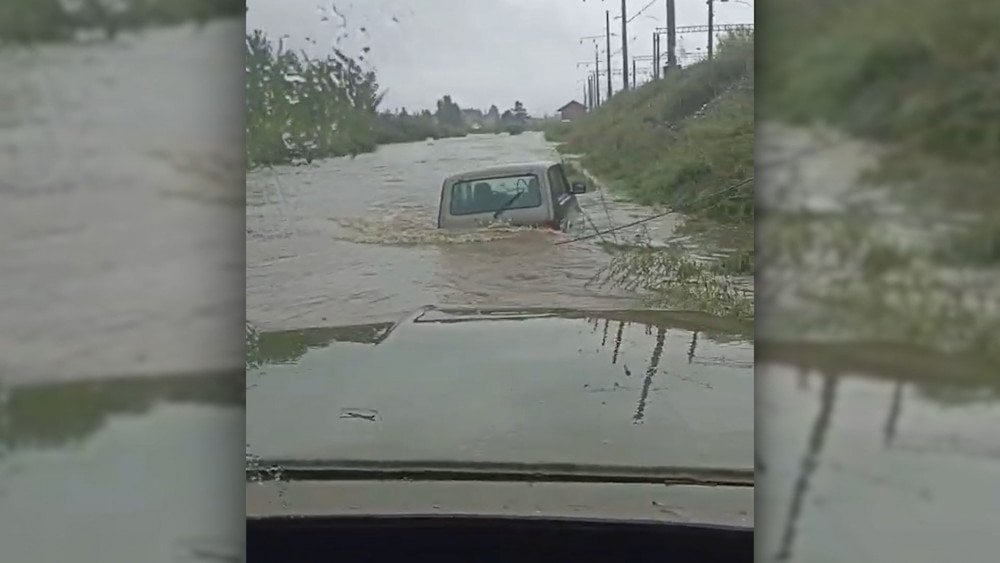
Flooded road in the Republic of Buryatia, Russia
Water inundated homes and yards, washed away hundreds of meters of railway tracks on the stretch from the Tugnuy open-pit mine to Chelutai station. 170 km (106 miles) of roads were damaged.
In the village of Novoilinsk, only the railway bridge withstood the force of the disaster. Four vehicle bridges and three pedestrian bridges were destroyed by the raging torrent.
More than 100 people were evacuated from the Zaigrayevsky and Mukhorshibirsky districts. Local residents lost their crops and livestock.
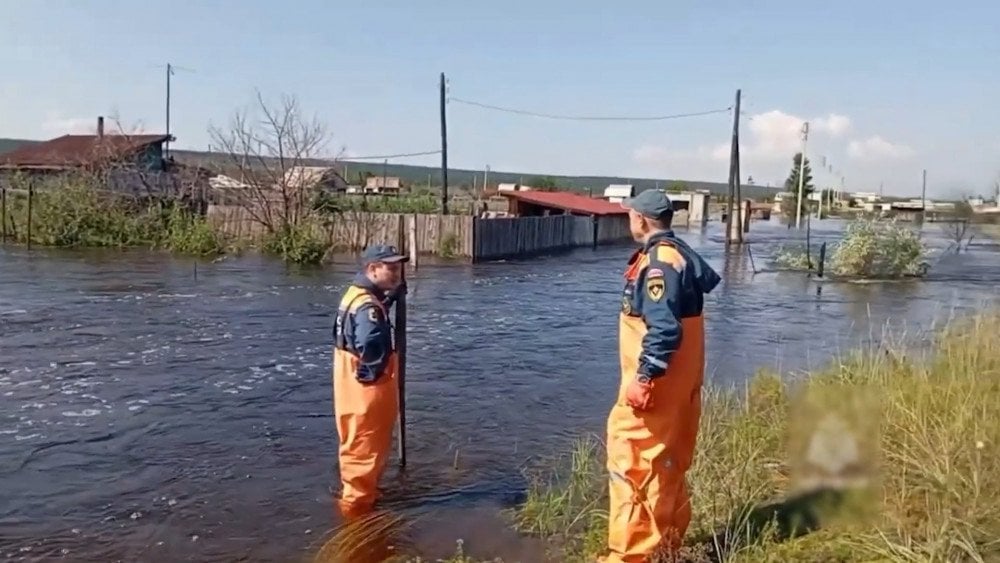
Rescuers assist residents affected by flooding in the Republic of Buryatia, Russia
On August 3, after an abnormal heatwave, the Republic of Altai and Altai Krai experienced severe storms with large hail. The wind uprooted dozens of trees, knocked down power line poles, and damaged house roofs.
A lightning strike set a restaurant on fire. In the recreational areas of Biryuzovaya Katun and Lake Aya, trees fell on vacationers' cars. In several settlements, such as Troitskoye, Maly Bashchelak, Chemal, and Gorno-Altaisk, hail the size of a chicken egg fell.
Aviation Incidents
On August 3, an Airbus A320 (UK32015) of Uzbekistan Airways, operating a Krasnoyarsk-Tashkent flight, hit a zone of severe hail at an altitude of 11 km (36,000 feet) over the Russia-Kazakhstan border.
This is
an extremely abnormal weather phenomenon for such an altitude,
as hail usually forms at heights of 8-10 km (26,000-33,000 feet). The cockpit windows and the nose radome (radar dome) were damaged.

Airbus A320 (UK32015) of Uzbekistan Airways, damaged by severe hail
There were 174 passengers and six crew members on board. Fortunately, the aircraft safely landed in Uzbekistan's capital.
Saudi Arabia
Starting August 3, Saudi Arabia was hit by devastating rains, causing some of the most severe floods in years in the Jazan region. Water flooded roads and streets, paralyzing the city and leading to massive power outages.
After 10 hours of continuous rain, a bridge between the cities of Abu Arish and Sabya collapsed in the Jazan region, resulting in one death and several injuries.

The collapse of a bridge due to severe flooding in the Jazan region, Saudi Arabia
Off the coast of Farasan Island, a highly unusual phenomenon for the area—a waterspout—was observed.
On August 4, extreme rains struck Mecca, the holy city for Muslims, causing significant flooding and damaging infrastructure.
Gulf meteorological services, including those in Saudi Arabia, issued strict warnings to refrain from travel due to hazardous conditions.
Chile
From July 31, rain and strong winds battered the central-southern part of Chile, from the Coquimbo region to Los Lagos.
The country experienced widespread water and phone service outages. Roads and bridges were damaged. Eighty-nine homes were completely destroyed, and 4,975 were damaged. Four people died, and two went missing, while six were injured.
Experts estimate that in the Bio-Bio region, not only was the wind speed, which reached 180 km/h (112 mph), abnormal, but so was its duration. The strongest gusts in this area usually last around 3-4 hours, but this time they continued for nearly two days.
Due to the overflow of the Curanilahue River and strong winds in the Bio-Bio region, 730 homes were damaged.
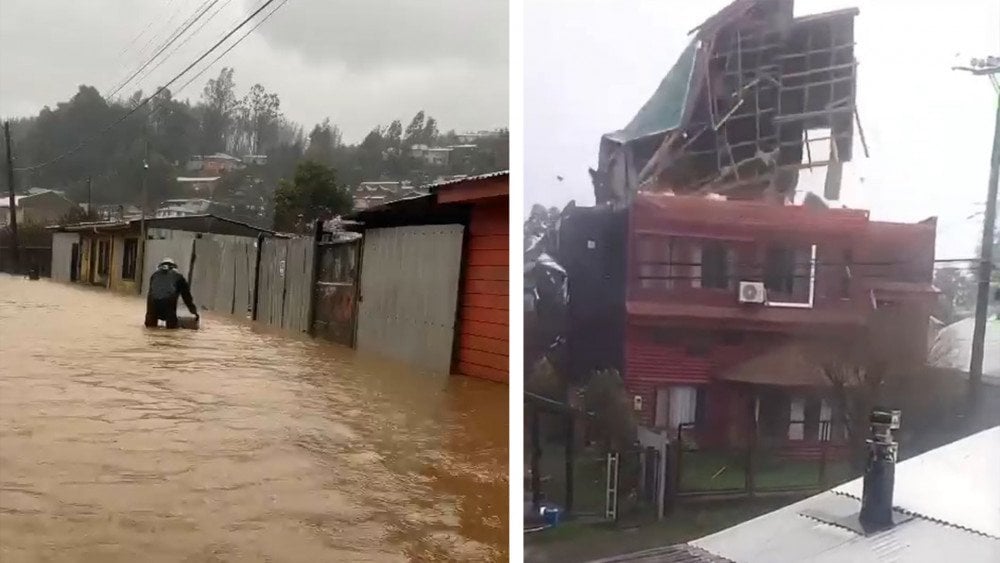
Rain and strong winds caused significant damage to infrastructure in Chile
It is worth noting that in Chile's capital, Santiago, strong winds are uncommon; for example, in August, the average hourly wind speed is about 8.9 km/h (5.5 mph).
But on August 2, the wind gusts in the city reached an incredible 124 km/h (77 mph). At the same time, the temperature suddenly rose by 10°C (17°F) in just half an hour. According to climatologists, this is an entirely atypical and unstudied phenomenon for this region.
The wind knocked down about 2,000 trees. The operation of Santiago International Airport was suspended, and the control tower staff were evacuated.
In five regions of Chile, classes in educational institutions were suspended. As of August 2,
more than 1,100,000 consumers across the country were without electricity.
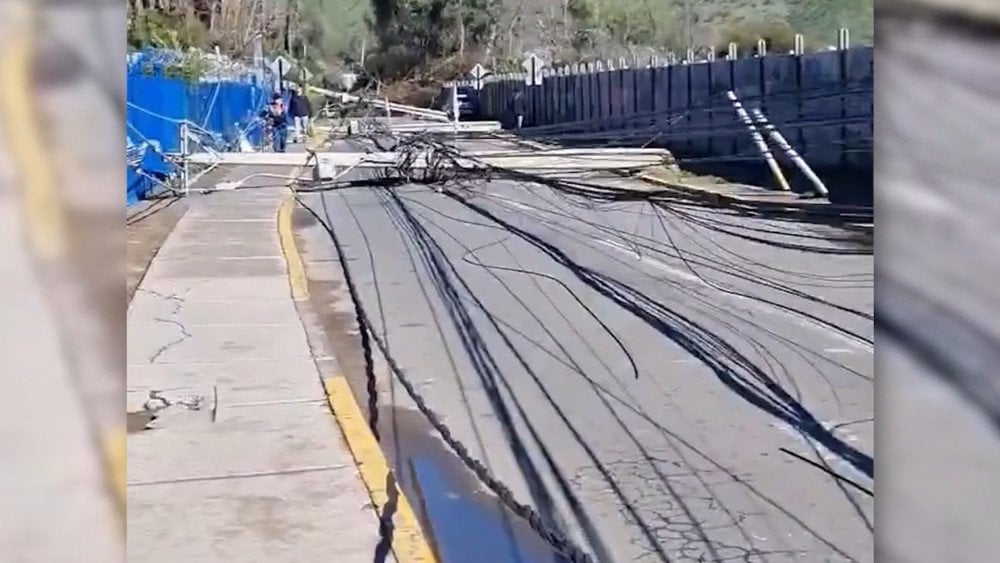
Power lines downed by strong winds, Chile
Four days later, on August 5, 398,453 customers were still without power after the storm hit.
Spain
On August 2, a sudden downpour hit the capital of Spain, Madrid. In just 10 minutes of heavy rain, the streets turned into rivers, and metro and commuter train stations were flooded.

Flooded metro station in Madrid, Spain, after heavy rains
A devastating storm with rain and large hail struck the municipality of Sant Pere de Torelló in the province of Barcelona.
All street furniture was damaged, basements were flooded, and hailstones up to 4 cm (1.6 inches) in diameter shattered windows and dented car bodies. Near the city of Vic, a catenary caught fire, leading to the evacuation of about 100 passengers from a train.
Italy
Bad weather also struck the city of Turin and its surrounding areas, causing trees to fall on houses and cars. A gust of wind knocked down a construction crane. Four kayakers on the Po River were helped to safety by firefighters. However, they needed medical attention as they were injured by hailstones.
On August 4, Mount Etna erupted for the fifth time since the beginning of July. Fountains of lava and a cloud of ash rose 10 kilometers (6.2 miles) from the Voragine crater. Flights at Catania airport were canceled.
In the municipalities of Viagrande, Trecastagni, Zafferana Etnea, and the city of Catania on the island of Sicily, everything was covered in ash. A state of emergency was declared in the region.
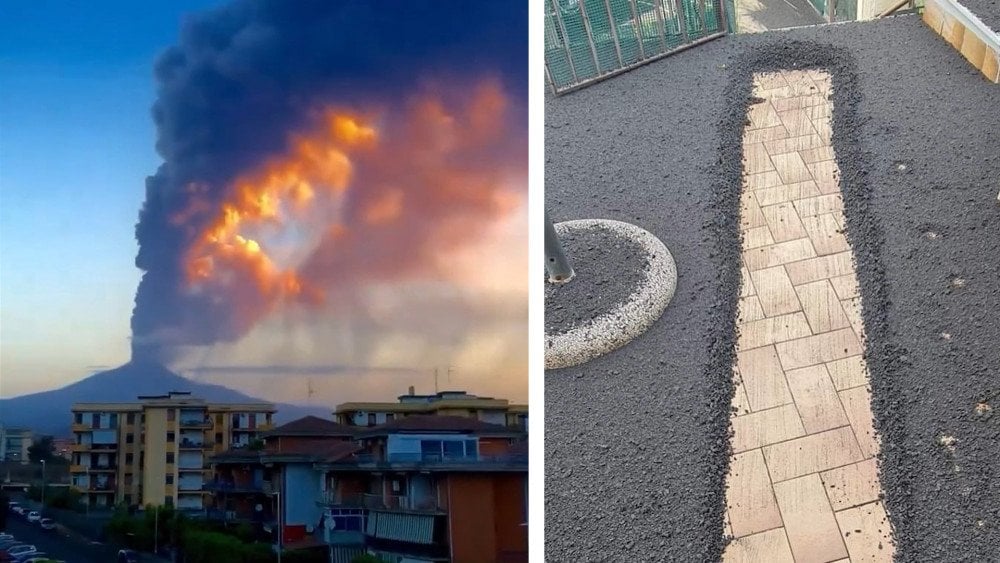
Eruption of Mount Etna and ash-covered street on Sicily Island, Italy
Preliminary estimates indicate that the collection, removal, and disposal of ash will require about 15 million euros.
China
On August 3, in Sichuan Province, China, flash floods and landslides resulted in eight deaths, with 19 more people still missing.
At night, a massive landslide occurred on the stretch between the cities of Kangding and Luding, destroying a bridge that connected two tunnels on the Ya'an expressway. The accident happened at approximately 03:30 local time, and at least three vehicles with people inside fell into the gorge.
Next, the landslide hit the village of Ridi in the Garze Tibetan Autonomous Prefecture of Sichuan Province. Several houses with sleeping residents were buried under tons of mountain debris.
More than 1,500 people were involved in the rescue operation.

Village buried under tons of mountain debris in Sichuan Province, China
Canada
On August 5, a hailstorm with rain and strong wind hit the northern districts of Calgary, Canada.
Hail up to 4.5 cm (1.8 inches) in diameter
left shattered windows, walls, and roofs of houses, damaged cars, and destroyed gardens.

Houses damaged by large hail in Calgary, Canada
Calgary International Airport was partially closed due to damage from the storm.
Local residents were shocked by the amount of hail and the enormous damage it caused to the city.
USA
Tropical Storm Debby (also known as Hurricane Debby) struck the coast of Florida, USA, on August 5, causing catastrophic flooding and severe destruction in the state. Debby hit Florida as a Category 1 hurricane.
In Sarasota and some of the surrounding areas, rainfall exceeded 760 mm (30 inches).

Hurricane Debby caused flooding in the state of Florida, USA
Weakening to a tropical storm, it slowly moved northeast, pouring massive amounts of rain along its path. Along the coast between Charleston, South Carolina, and Savannah, Georgia, up to 300 mm (12 inches) of rain fell in 24 hours.
In Berkeley County, South Carolina, the storm spawned a tornado that destroyed several businesses and damaged many buildings.
Tropical Storm Debby led to the cancellation of more than 1,600 flights across the country. In Florida and Georgia alone, more than 350,000 consumers were left without power. At least six people died.
Pakistan
On August 1, the city of Lahore, Punjab Province, Pakistan, received a record amount of rainfall. A 44-year-old record was broken.
Water flooded roads and highways, seeped into homes, and even emergency rooms.
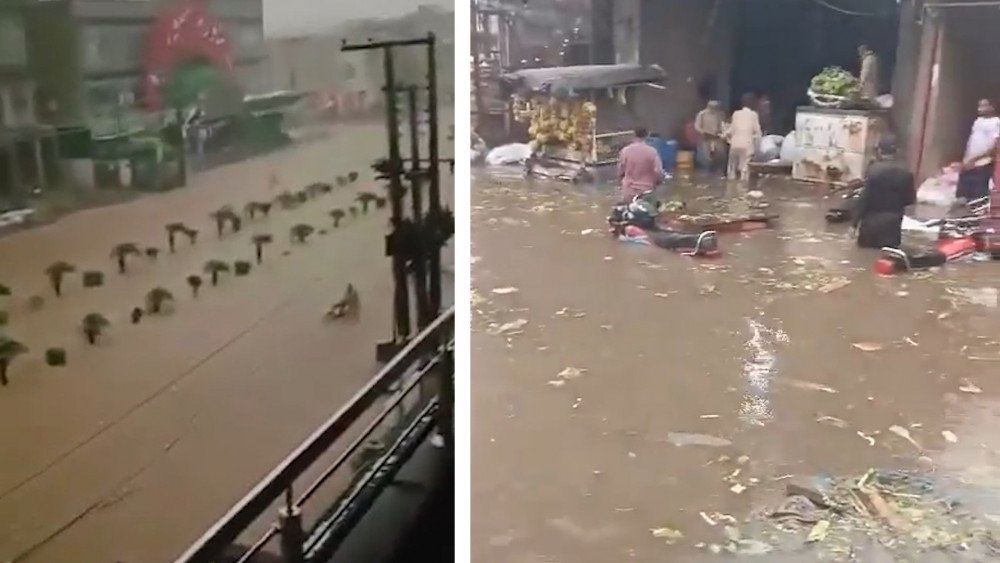
Flooded streets and houses in Lahore, Pakistan
Rains in Kohat district, Khyber Pakhtunkhwa province, flooded the basement of a house where people were sleeping: 11 people died, all of whom were members of one family.
India
As a result of heavy rains in northern India, at least 21 people died, and more than 50 went missing. The rains and floods caused massive infrastructure destruction.
On July 31, a red alert was declared in Delhi, and all schools were closed. In the city of Jaipur, Rajasthan, streets turned into rivers, basements flooded, and several buildings collapsed.
In Himachal Pradesh state, bridges, houses, and roads were damaged.
The day before, a series of large landslides hit the Wayanad district in the southern state of Kerala.
This resulted from abnormally heavy rains in the region:
over two days, more than 570 mm (22 inches) of rain fell here.

Aftermath of a large landslide in Wayanad district, Kerala state, India
Landslides struck homes with people sleeping inside, leading to a significant number of casualties. According to local media, as of August 6, the death toll exceeded 400 people, with around 200 more reported missing. Rescue operations were complicated by bridges and roads being destroyed, as well as continuous rains.
It is noteworthy that in India, after the severe landslides in Kerala state, a ban was imposed on scientists investigating the site and commenting on the incident in the media. However, due to public backlash, the ban was lifted a few hours later.
But this is not the only example. Various countries are increasingly facing restrictions and bans on information, especially regarding climate issues.
We have long warned that this would happen and that it is a very bad sign. It suggests that governments are starting to realize that the climate situation is far too serious and that they have no truly effective solutions to the problem. Therefore, to avoid causing panic, they need to restrict or ban information. And these restrictions will increase as climate chaos intensifies. Everyone understands where this will lead us.
But there is indeed a solution. It has been repeatedly voiced at the “Global Crisis” forums. The proposed solution benefits everyone. Do you know why politicians don't see it and don't listen to us? Because the proposed solution does not fit into the current societal approaches based on competition among countries for leadership and dominance. But to solve this global problem, true partnership is needed, built on equality, openness, and fairness.
Figure out how this works. And once you understand it, tell others. If the majority of people genuinely want the problem to be solved in the best possible way, it will be solved. Because politicians are forced to follow the will of the people.
Please, understand that the future of humanity depends on your decisions, and you are making them right now!
You can watch the video version of this article here.
Leave a comment